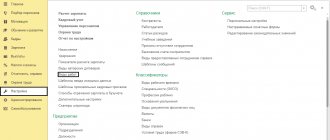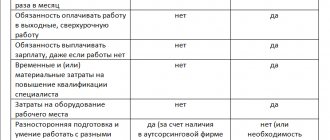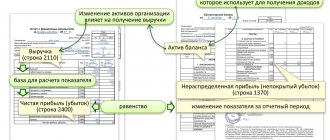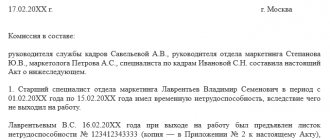The Tax Code (subclause 1, clause 1, article 259.3) allows you to write off the costs of acquiring and creating fixed assets that operate in an aggressive environment as a reduction in taxable profit twice as fast as usual. It establishes an increasing coefficient of up to 2 to the depreciation rate of such objects (the choice of the size of the coefficient remains with the taxpayer). Disputes with tax authorities are about situations in which it is permissible to apply this coefficient. The Tax Code establishes only two cases (paragraph 3, subparagraph 1, paragraph 1, article 259.3). At the same time, in order for the right to increased depreciation to arise, it is enough that one condition is met - each of these two cases has its own - condition. There is ambiguity in their wording, which causes disagreements with inspectors.
The first case is the actual use of the object in an aggressive environment. The Tax Code defines it as a set of natural and (or) artificial factors, the influence of which causes increased wear (aging) of fixed assets during their operation.
In this definition, it remains unclear in comparison with which rate of aging is considered increased wear: with that which would occur during operation in a normal environment, or with wear and tear during operation of the object in the conditions for which it is intended? For example, an SUV is used for off-road travel, for which it is, in fact, designed. At what rate of aging should we compare the wear and tear of this car caused by the environment in order to determine whether it is increased or not: with what occurs during its operation on the roads (normal conditions for all cars) or when traveling specifically off-road (normal operating conditions for an SUV)?
The second case of applying an increasing coefficient is situations in which the Tax Code equates the operation of fixed assets to work in an aggressive environment: the presence of objects in contact with an explosive, fire-hazardous, toxic or other aggressive technological environment that can serve as the cause (source) of an emergency.
Here, as we see, there is no longer any mention of increased wear. That is, just one contact with the listed types of environment is already sufficient for the right to accelerated depreciation - it does not matter whether this contact causes increased wear compared to anything else (including what was intended during the design of the object) or not. For example, a gas pipeline is designed for pumping gas and contact with it does not wear out faster than intended by the manufacturer. However, gas is an explosive substance, and the mere fact of contact with it allows the gas pipeline to quickly depreciate.
The logic of constructing the final part of this definition clearly suffers, since it turns out that working in an aggressive environment equates to the presence of fixed assets in contact with an aggressive environment (though not with any environment, but only with such a technological one that can cause an accident). But the main part of this definition is still the first part, which lists specific types of environment, contact with which gives the right to accelerated depreciation without any additional conditions.
The only exception established by the legislator is the prohibition to accelerate, using a special coefficient, depreciation calculated using the non-linear method for fixed assets from the first, second and third depreciation groups.
Reducing property taxes when using the accelerated depreciation mechanism
The basis for determining the tax base for property tax is the residual value of fixed assets. It is obvious that when using accelerated depreciation of fixed assets, their residual value will decrease much faster than when calculating depreciation using the usual method. In addition, the complete write-off of fixed assets when using accelerated depreciation with a coefficient, for example, 3, is carried out three times faster. All this allows you to significantly reduce the amount and period of payment of property tax when using the accelerated depreciation method.
The essence of the accrual method in accounting and tax accounting
The essence of the accelerated depreciation method is to apply the coefficient of increased wear and tear of products and transfer the increased cost to the price of the final product.
In accounting, this increased coefficient cannot be more than 3, and for small enterprises - more than 2.
In tax accounting, it can take the value 2 or 3 depending on the basis - Article 259.3 of the Tax Code of the Russian Federation indicates cases of application of this parameter by organizations.
The factor is added to the basic depreciation rate, increasing it.
Redemption of the leased asset at the minimum residual value
Leasing transactions, as a rule, are concluded for a period that allows the leased asset to be completely written off using an accelerated depreciation mechanism. For example, if equipment is classified in the fifth depreciation group with a useful life of over 7 to 10 years (from 85 to 120 months), accelerated depreciation of equipment during leasing with a coefficient of 3 will allow it to be written off in 28 months, i.e. in less than 3 years. At the end of the leasing agreement, its residual and, accordingly, redemption price will be minimal (either zero or conditional, equal to, for example, 1,000 rubles). At this cost, the equipment will be reflected as part of the lessee's own fixed assets.
A minimum or zero residual value may be beneficial to the lessee, for example, in the case of the sale of leased equipment or a car. The lessee can legally sell this property at a price of, for example, 1,000 rubles. This scheme is often used by managers of lessees who buy cars into ownership after leasing at a minimum price.
Calculation formulas in accounting
The accelerated accrual method in accounting is called the reducing balance method, where the basis is the residual value of the fixed asset, the acceleration factor and the useful life.
First, annual depreciation is calculated, then it is divided into 12 months.
Formula:
Ar = St / SPI * K
- Ag – annual depreciation;
- St – residual value of the object (property) at the beginning of the year;
- SPI is the time of use of a fixed asset in a company. Defined in years;
- K – acceleration coefficient no higher than 3, which is set by the organization depending on the basis (small enterprises cannot set a coefficient higher than 2).
In addition, accounting also uses the non-linear accrual method - based on the sum of the numbers of years of the useful life.
In this case, the acceleration factor is not applied, but deductions are also made at an accelerated pace - more is written off in the first years than in subsequent years, and the amount of depreciation decreases every year.
Acceleration factor in tax accounting
The acceleration coefficient is a legally established indicator that is used to calculate accelerated depreciation of fixed assets if the enterprise has the appropriate basis.
Over the years, this parameter ranged from 2 to 3.
Using this coefficient, the manufacturer includes the cost of depreciation of its assets in the final cost of the product, taking into account multiplication by this indicator.
Ultimately, this affects the final cost of products upward, but helps offset equipment costs and reduce taxes.
The legislation provides several grounds for applying such a coefficient.
The acceleration coefficient with index 2 is obtained:
- Enterprises operating in special economic zones. In addition to tax benefits, such enterprises receive the right to calculate depreciation with a doubling of the usual rate.
- Enterprises operating on the basis of a special investment contract. A special tax regime is calculated for them. Also, these organizations must fall under the classification of sections 1-6 of depreciation groups in accordance with the Tax Code of the Russian Federation.
- Agricultural organizations of industrial type with a special status. These categories include state farms of various types, factories for the production of dairy and other food products. The accelerated depreciation method is used in this case if the enterprise has both its own equipment and fixed assets acquired on lease.
- Enterprises operating in unfavorable climate conditions. Such conditions include regions of the Far North, urban areas of heavy industry, arid areas and enterprises operating with hazardous, flammable and chemical substances.
It is important that these organizations are registered for tax purposes before January 1, 2014. Also, the enterprises owned, used and disposed of objects (property) for a period of at least 3 years.
Enterprises that have the right to apply an acceleration factor for depreciation of fixed assets equal to 3:
- In relation to items and objects subject to leasing agreements and used for 5 years or more.
- Organizations using facilities for the extraction of minerals, subsoil and hydrocarbons, provided that the facilities are used exclusively for production. Also, the enterprise must have a special license to carry out this type of activity.
- Fixed assets used exclusively for scientific purposes. This category includes objects of scientific institutes and organizations used for scientific research.
Accelerated depreciation allows the manufacturer to distribute the existing costs of equipment over the production period, as well as compensate for these costs by including the costs of equipment depreciation in the cost of the final product.
In the case of accelerated depreciation, this indicator will be correspondingly higher than the standard, since accelerated depreciation of the enterprise's fixed assets occurs.
Application cases
The use of an accelerated method for calculating and calculating depreciation of fixed assets of an enterprise is beneficial if it is necessary to speed up the process of writing off the cost of purchased equipment.
By reducing the tax base, the use of this coefficient can sufficiently compensate for the resulting costs (especially effective when using leasing).
At the same time, guided by Art. 252 of the Tax Code of the Russian Federation, the enterprise demonstrates the economic feasibility and justification for using this coefficient.
When leasing fixed assets
Accelerated depreciation and an increased coefficient are often applied to leased property. There are explanations for this. Accelerated write-off of value allows the person on whose balance sheet the leased property is listed to reduce income and property taxes.
Read more about calculating depreciation when leasing fixed assets.
In addition, if the fixed asset is listed on the lessor’s balance sheet, then the accelerated method allows you to quickly return the money invested in the object.
If the asset is on the balance sheet of the lessee, then this method allows you to quickly reduce the residual value of the asset for the purpose of its further repurchase from the lessor at a lower price.
The acceleration factor for leasing can be set to a value within three. In this case, the indicator can also be fractional, for example, 2.4 or 1.6.
In tax accounting, an accelerating indicator cannot be used for fixed assets whose useful life is less than five years (fixed assets belonging to depreciation groups 1-2).
The acceleration factor is added to the depreciation rate, which is then multiplied by the cost of the fixed asset.
Calculation of accelerated depreciation of fixed assets
In accordance with the Law “On Leasing” (Article 31) and the Tax Code (subparagraph 1 of paragraph 2 of Article 259.3), the balance holder of the leased asset has the right to apply accelerated depreciation to the leased property with a coefficient of up to 3. However, there is a limitation: the accelerated depreciation rate does not apply to property belonging to the first – third depreciation groups (i.e. with a useful life of more than 1 year to 5 years).
When applying an accelerated depreciation factor, the current depreciation rate is multiplied by an increasing factor. In this case, the coefficient can be selected in the range from 1 to 3 and take not only integer values, but be equal, for example, 1.5, 1.63, 2, 3, etc.
The evidence is yours
As you can see, it is possible to double the tax depreciation rate for equipment that operates in a hazardous environment and is intended for use in it, but only through the court. It must be remembered that the responsibility to prove the legality of the application of benefits lies with the taxpayer (resolutions of the Supreme Arbitration Court of March 21, 2006 No. 13815/05 and of February 14, 2006 No. 11202/05). To get court support, you will have to acquire a whole bunch of papers.
First of all, it is better to consolidate the intention to apply the coefficient in the accounting policy. Although the courts do not recognize this as a mandatory condition for the right to accelerated depreciation (decrees of the Supreme Arbitration Court of January 30, 2009 No. VAS-544/09 and May 22, 2008 No. 6444/08), this will avoid unnecessary disputes with inspectors. In order to leave yourself room for maneuver (accelerating depreciation is not always profitable - for example, in a loss-making period it is better to postpone expenses “for later”), in the accounting policy you can only write down a general provision that the question of using the coefficient and its size is decided by the manager organization in relation to each fixed asset object at the time of its commissioning, issuing an appropriate order.
Next, you need to obtain evidence that the conditions in which the facility operates comply with the definition of an aggressive environment given in the Tax Code. The latter does not establish exactly how this needs to be confirmed. Therefore, evidence can be any information. Courts accept as evidence expert opinions confirming the presence in the environment of substances and factors that destroy an object (both natural and man-made). It is better if this is the conclusion of a third-party specialist (for example, the Federal Antimonopoly Service of the Ural District refused to accept as evidence the local documents of the company with the conclusions of the specialists working for it - resolution dated February 5, 2007 No. F09-104/07-S3). Finally, further confirmation will be required that the object actually worked under these conditions and was in contact with a hazardous environment.
Leasing agreement
Under a financial lease agreement, the lessor is obliged to purchase the property specified by the lessee and provide this property for use by the lessee. In this case, the latter independently determines from which specific seller this property should be purchased.
This is interesting
The total amount of the leasing agreement may include the redemption price of the leased asset. This is possible if the contract provides for the transfer of ownership of the property to the lessee.
In other words, the main difference between leasing and rental agreements is that the lessor purposefully buys property known in advance to lease it from a seller agreed upon by the parties. When renting, your own property is transferred, which is not specifically purchased for a specific tenant.
The subject of leasing agreements can be any non-consumable things, for example, buildings, structures, vehicles, equipment and other movable or immovable property. The exception is land plots and other natural objects, as well as property, the free circulation of which is prohibited by law.
It is worth noting that the ownership of the leased asset remains with the lessor throughout the duration of the contract. The lessee has the right only to temporary possession or use.
But at the same time, leased property can be taken into account on the balance sheet of either party. Consequently, depreciation will be calculated by the person who is the balance sheet holder. This condition is agreed upon by the parties when signing the contract.
The participants set the validity period of financial lease agreements independently and record it in the document. It is impossible to conclude such an agreement, unlike a lease, for an indefinite period, since leasing payments are tied to the duration of the agreement. It can only be extended, and the previous conditions may be changed or retained. The leasing agreement also stipulates the terms on the amount, method and frequency of payment of leasing payments.
Leasing payments mean the total amount of payments under the leasing agreement for the entire period of its validity, which includes:
- reimbursement of the lessor's costs for the purchase and transfer of the leased asset to the lessee;
- reimbursement of costs for services provided for in the leasing agreement;
- lessor's income.
Payments under leasing agreements can be established:
- in a fixed amount of payments made periodically or at a time;
- in the share of products, fruits or income received as a result of the use of leased property;
- in the provision by the lessee of certain services;
- in the transfer by the lessee to the lessor of a thing stipulated by the contract for ownership or temporary possession (use);
- in imposing on the lessee the costs of improving the leased asset.
Also, the parties may provide in the leasing agreement a combination of these forms or other forms of leasing payment. In addition, the parties can agree to change the amount of leasing payments. But you can change it no more than once every three months.
Depreciation calculation
As you already understood about the salvage value, the formulas for calculating depreciation themselves have not changed . The value that needs to be substituted in them has changed.
If LP is determined, then the formula for calculating depreciation using the selected method must include the following expression:
| (BOOKING VALUE – CLOSING VALUE) |
Note that FSBU 6/2020 does not contain direct mention of the right to carry out accelerated depreciation. However, when depreciating using the reducing balance method, it is permissible to use acceleration factors.
you cannot simply apply an acceleration factor . There must be objective factors such as special operating conditions. And information about the acceleration of depreciation and the reasons that prompted it must be disclosed in the reporting.
The company determines the formula by which to calculate the reducing balance and apply the acceleration factor independently . , 2 conditions must be met
- the amount of depreciation decreases from period to period;
- at the end of the joint venture book value and LP are equal.
To conclude the topic of calculations, let us explain a little about the calculation of depreciation in physical terms.
The basic formula ties depreciation to the volume of what the object produces.
The volume of products (works, services) for substitution in the formula must be determined precisely by what is produced. Not by shipment and not by sales proceeds!
Please note that FSBU 6/2020 does not require depreciation to be calculated monthly. The period for which depreciation must be calculated is determined by the company independently . Only the periods for depreciation must correspond to the period for which you are preparing reports - within the financial year.
For this reason, we called the formula for calculating depreciation per month basic. It can be adapted for quarterly and, for example, semi-annual depreciation calculations.
Items are on the balance sheet of the person providing the leasing
The lessor can account for the leased asset on its balance sheet. In this case, the leaseholder does not need to write off depreciation. But he is obliged to accept the item into off-balance sheet account 001. The item is accounted for as rented (clause 8 of Order No. 15). The total cost is determined on the basis of the leasing agreement. After the agreement ends, the item must be written off from the off-balance sheet account. The leasing recipient needs to accept the obligatory payments under the leasing agreement into the structure of other expenses. Acceptance for accounting is carried out as these payments are accrued (clause 7 of Article 272 and clause 1 of Article 264 of the Tax Code of the Russian Federation).
The person providing leasing services determines depreciation in a standard manner. Objects must be accounted for in account 03. Depreciation deductions are recorded in a subaccount to account 02. The lessor needs to use these postings:
- DT08 KT60. Purchase of equipment for its transfer on the basis of a leasing contract.
- DT08 KT60. Expenses for the purchase of equipment.
- DT19 KT60. Accounting for VAT on purchased equipment.
- DT76 KT03. Transfer of equipment to the balance of the lessee.
- DT03/1 KT08. Recording of the leased asset in accounting.
- DT03/2 KT03/1. The equipment is available for leasing.
- DT20 KT02. Fixation of depreciation charges.
- DT46 KT20. Write off depreciation for sales.
- DT90/3 KT68/1. Accrual of VAT on leasing payments.
- DT62 KT90/1. Calculation of leasing payments.
One of the key primary documents is the leasing contract.
Application of accelerated depreciation during leasing
Organizations that have a leased asset on their own balance sheet can accrue A at an accelerated rate with a coefficient of no more than 3. The exception is objects of the 1st, 2nd and 3rd groups.
If the object is the entire enterprise, as a single material complex, accelerated depreciation under the leasing agreement is charged on all fixed assets, not counting assets belonging to the 1st, 2nd and 3rd groups.
Civil servants of the Ministry of Finance of the Russian Federation indicate that the lessor has the right to continue accrual at an accelerated pace, even if the tenant has changed.
A new tenant can use incremental values up to 3 when receiving a leased item that was previously owned by another user. The new owner can independently set the size of the coefficient, without relying on past data.
If the leased asset is used under an agreement concluded before January 1, 2002, it is accrued accelerated depreciation in accordance with the following rules:
- fees correspond to the method used to transfer property;
- accrual occurs using a coefficient of no more than 3;
- property depreciated in a non-linear manner should be separated into a separate subgroup.
Legal basis
Leasing is regulated by Federal Law No. 164 of October 29, 1998 and articles 665-670 of the Civil Code of the Russian Federation (section 4). Accounting for leasing operations is carried out on the basis of PBU 6/01 and Order of the Ministry of Finance No. 15 of February 17, 1997. Tax accounting is carried out on the basis of Chapter 25 of the Tax Code of the Russian Federation (Articles 259.3, 264, 272).
Question: How to reflect in the accounting of the lessee organization, which takes into account the leased asset on its balance sheet, the correction of an error made when calculating depreciation on leased property due to an incorrectly determined useful life in accounting, if this error is insignificant and was identified at the time of return of the property to the lessor after approval of the annual financial statements (in May 2022)? View answer
The amount of depreciation for leasing is determined by the participant who accepts the leased asset on the balance sheet. The basis is paragraph 10 of Article 258 of the Tax Code of the Russian Federation. The party that accepts the object for balance must be specified in the contract. When determining depreciation amounts, you must first determine the useful life. It can be installed either independently or based on the OS Classification.
Depreciation must be written off from the month following the month of acceptance of the leased asset for use.
The organization transferred lease payments under the buyout lease agreement, and along with them transferred part of the buyout value. The company included the entire amount of each payment in other expenses. However, during the inspection, the inspection came to the conclusion that the redemption price should form the initial cost of the object and then be written off through depreciation. View the court's opinion










